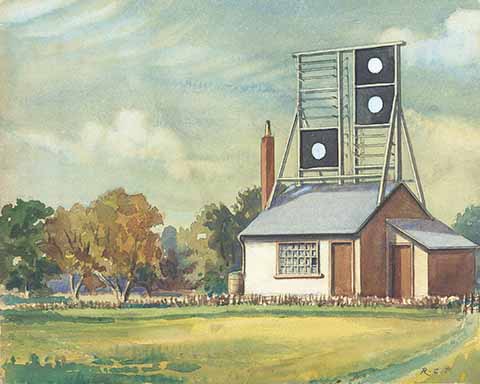When news travelled fast
Roger Guttridge recalls Dorset’s major role in a high-speed signalling system between London and Plymouth
Published in July ’19
In an age dominated by the text, the tweet and other forms of instant communication, it is worth pointing out that some news travelled almost as quickly more than 200 years ago. In the early 1800s, a message could be sent between Plymouth and London and acknowledged in a matter of minutes. And the green hills of Dorset played a major role in this imaginative Georgian technology.
During the Napoleonic Wars, the Admiralty Shutter Telegraph employed no fewer than nine hilltop signalling stations across Dorset, each of which formed a vital link in a chain that conveyed urgent news, orders and other information between Plymouth and London. The system is often known as the Murray Telegraph after its inventor, Rev. Lord George Murray. Murray’s system was a more refined version of a similar effort designed in 1795 by Rev. John Gamble, Chaplain to HRH the Duke of York. Whereas Gamble employed four shutters set in a frame that was 50ft high and 20ft wide, Murray’s less clumsy and more versatile version used six shutters in a frame measuring just 30ft by 20ft. The frame and shutters were mounted on the roof of a two-room hut that accommodated a three-man team. By opening and closing each shutter’s slats like a Venetian blind, the Murray Telegraph could make 63 changes – enough to cover all 26 letters of the alphabet, all 10 numerals and selected commonly used words and phrases.
On its route from London, the Telegraph entered Dorset at Pistle Hill (now known as Telegraph Plantation) between Alderholt and Cranborne. The next station was on Chalbury Hill near Wimborne and the next again at Blandford Racecourse, now part of Blandford Camp. From there the chain moved to Bell Hill, Belchalwell; Nettlecombe Tout above Mappowder; High Stoy near Minterne Magna; Toller Down, west of Rampisham; Lamberts Castle; and Dalwood Common, then part of Dorset until its transfer to Devon in 1844. Seven more signalling stations took the chain to Plymouth. In total, the system had 31 stations, including two in south Hampshire that connected the system to Portsmouth.
The maximum distance between stations was ten to twelve miles and it was obviously essential that each could be clearly seen from the two stations on either side. Up to six signals a minute could be transmitted. An average message took about 15 minutes to reach London from Portsmouth or vice versa and a little longer to travel the Plymouth route. But a brief, prearranged signal could travel between Portsmouth and London and be acknowledged back in two minutes and between Plymouth and London in three minutes.
Writing in 1890, T.B. Groves recalled: ‘The telegraph station was occupied by an officer and two men, one of whom was always on duty, marching backwards and forwards in the instrument room, applying his eye alternately to the fixed telescopes directed to the stations right and left of them. At night there was nothing to do beyond watching for the beacon fire, provision for which was made by having ready adjacent a large stack of firewood for immediate kindling.’
Each ‘glassman’, as the pair who manned the telescopes were known, was allowed to leave his post for no more than two minutes at a time. The weather provided the greatest challenge to the telegraph operators, especially poor visibility and high winds. Henry Ward of Blandford wrote in 1807: ‘Being one day at the Telegraph on the Blandford station, I observed a great inconvenience attend the working of it in windy weather, and many errors occasioned in consequence.’ Ward was inspired to invent a crank that held each shutter in its vertical or horizontal position, for which he was awarded ten guineas by the Society for the Encouragement of Arts, Manufacturers and Commerce.
In his book, Blandford and the Military, Alan Harfield names the three civilians who were manning the Blandford station in 1810. In charge was foreman Phillip Webb, aged 48, a former stocking weaver, who was now into his fifth year on the station. The glassmen were Thomas Hill, 33, who was previously in husbandry and had been on the station two years, and 21-year-old Matthew Ware, described as a ‘lame labourer’, who had worked there for 20 months.
The telegraph stations became non-operational after 1816 but were maintained for the next nine years in case they were needed again. Usually the foreman or officer in charge was allowed to live there rent-free while also being responsible for maintenance. Many brought their wives and children to the huts, which they often extended to provide a washroom and additional sleeping accommodation. They also maintained vegetable gardens and often kept poultry and pigs.
The Chalbury station survived as a family home called Telegraph Cottage until 1968, when it was demolished to make way for a reservoir extension, and had been the home of the Poore family for many years.


